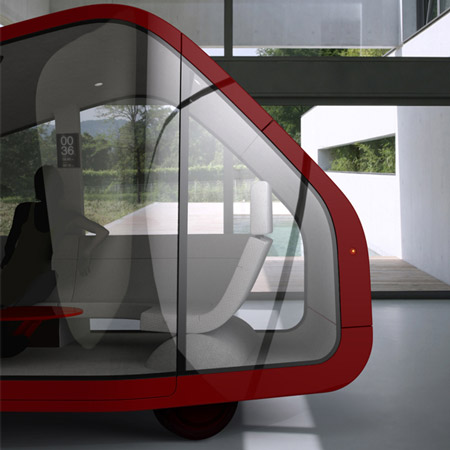
Autonomobile by Mike + Maaike
San Francisco industrial designers Mike + Maaike have proposed a self-driving electric passenger vehicle that they claim heralds "the end of driving".
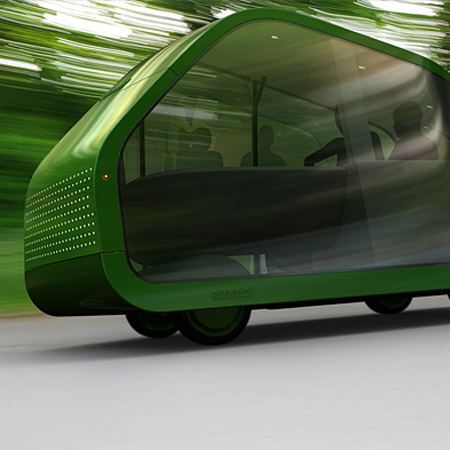
The Autonomobile (ATNMBL) is a concept car is designed around passenger, rather than driver, experience with architectural styling, a lounge-like interior and fully glazed sides.
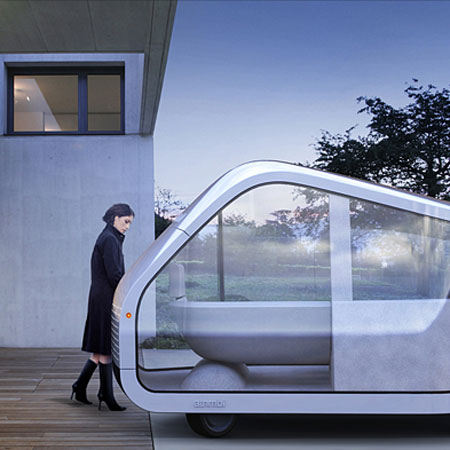
Mike + Maaike also designed the G1 Google phone. See our story here.
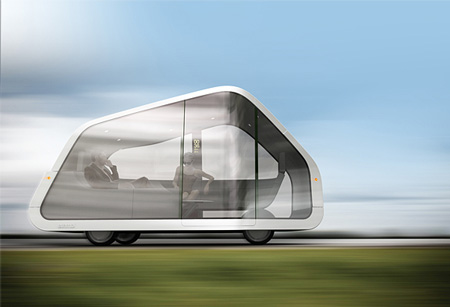
More on this project, including project sketches and design thinking, over at core77.com. Here's some text from Mike + Maaike:
--
The End of Driving.
We always wanted to design a car, it just never felt right. The current climate gave us the final push--with the car industry lost, an urgent focus on global warming, awareness of oil dependency, and the economic down turn, the stars have aligned. It is time to sow seeds, to experiment.
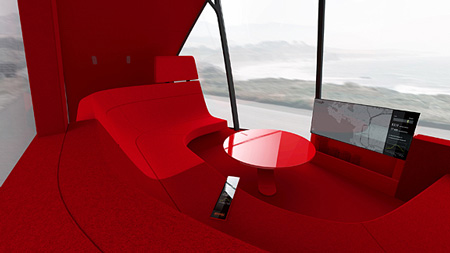
Armed with a small design studio, we set out to design a concept car which questions current obsessions of speed, styling and driving in search of an optimistic new future. And it quickly became clear to us:
A shift must take place from styling cars to redefining them.
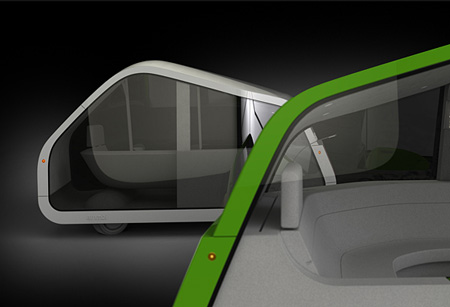
Speed has been the driving factor for car design, styling, and engineering for a century. Most vehicles on the road today are capable of reaching 120 mph yet they are mostly used at moderate speeds and sitting in traffic. It’s time to look at performance in a new way. Our vision is a new focus on quality of time while in traffic and transit. Dismissing the need for extreme MPH and acceleration as irrelevant, performance can be measured by time savings instead.
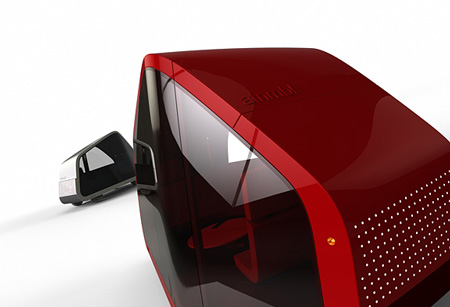
Driverless cars, once a fantasy requiring new roads and infrastructure, are now technologically possible, even inevitable. GPS, sophisticated sensors, and navigation databases will allow driverless vehicles to operate on the same roads we have today.
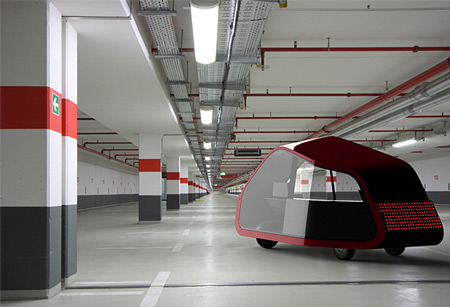
The shift from a driving infrastructure to a riding infrastructure has deep implications for society, yet it is currently being defined almost exclusively by engineers and the military. Positive design visions are desperately needed if this technology (and other robotic technology) is to have a positive impact on society.
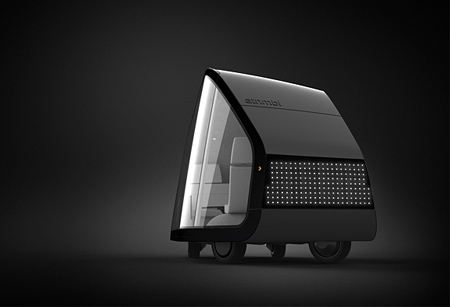
The Autonomobile
ATNMBL is our vision of a concept car for 2040 that represents the end of driving. Upon entering ATNMBL, passengers are presented with the question: "Where can I take you?". There is no steering wheel, brake pedal or drivers seat. ATNMBL drives by itself.
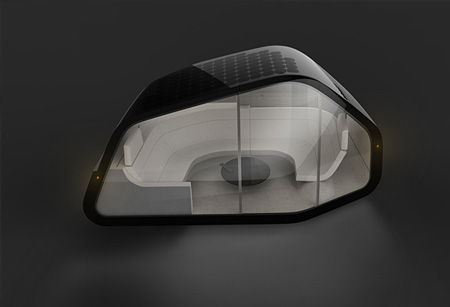
About the size of that parking space you couldn't fit into, electric powered with wrap-around seating for seven, ATNMBL offers living comfort, views, conversations, entertainment, and social connectedness. The vehicle is designed from the inside out with elements influenced by architecture and domestic interior spaces.
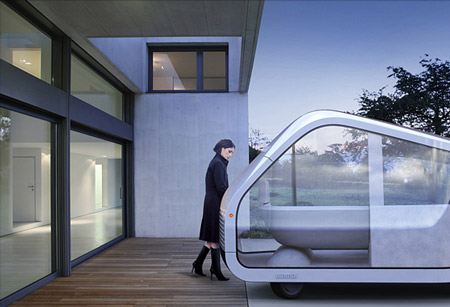
From the outside, ATNMBL looks like micro-architecture. Large windows, a pitched roof and asymmetrical from every view, it is designed without any reference to automobiles of the past. In contrast to today's automobiles, where much of the car's space is reserved for engine and drive train, ATNMBL's mechanical components are densely packed and simplified, providing dramatically more interior space in a vehicle that is shorter than most cars on the road today.
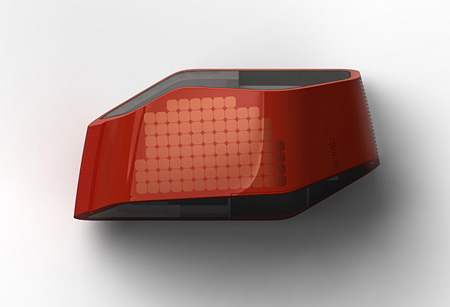
Electric motors in each wheel provide all-wheel drive. Electric power is stored underneath the seating and floor with additional power provided by solar panels on the roof. Within a gridded pattern on the front and rear is an array of headlights, tail lights and sensors.
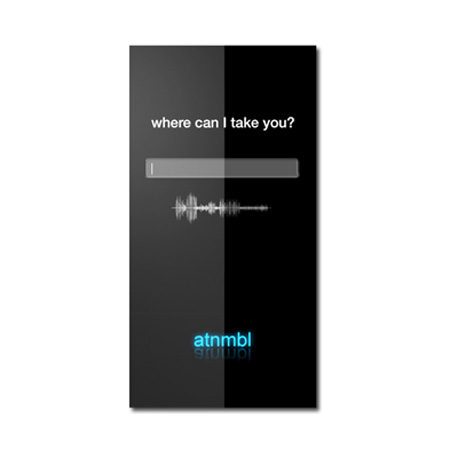
Passengers enter ATNMBL from the curb side through an electric glass sliding door into a standing-height entryway. Inside, the seating arrangement is a direct reference to the familiar living-room setting of a couch, side chair and low table. Riders are oriented towards each other and to the view outside through the large floor-to-ceiling windows on both sides. Centrally oriented is a large flat display that features live trip information, maps, and entertainment.

The display can slide up to reveal a bar behind. A new and comprehensive sense of control is introduced through voice recognition and a touch screen remote control (or one's personal phone), offering riders a wide range of trip planning, ride sharing and performance settings that can be very detailed for those who want elaborate control or extremely simple for those who would rather just relax and enjoy the ride.
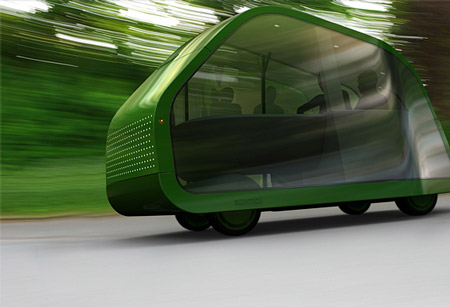
Summary of Features:
• fully electric powered plus solar assist
• driverless navigation via GPS, Lidar, radar, stereo camera, accelerometers
• wrap-around seating for 7
• voice recognition and remote for real-time control/ input
• large display for info, searches, browsing, communication
• open-source software with downloadable apps for carpool and carshare through social networking, pre-loaded trips, city tours, virtual drivers, etc.
• live trip info on mini display
• electric door, standing height entryway
• all wheel drive with motors in each wheel
• very few mechanical parts (drive by wire)
• bar
The list of life-enriching benefits is long: accessibility for young, old, and disabled (no drivers licenses), no searching for parking (it will drop you off and park itself), fewer cars will serve more people, less energy use, people will save hours each day (think autonomous check-ups and grocery pickups). Most importantly, there will be far fewer fatalities and there will always be a designated driver.
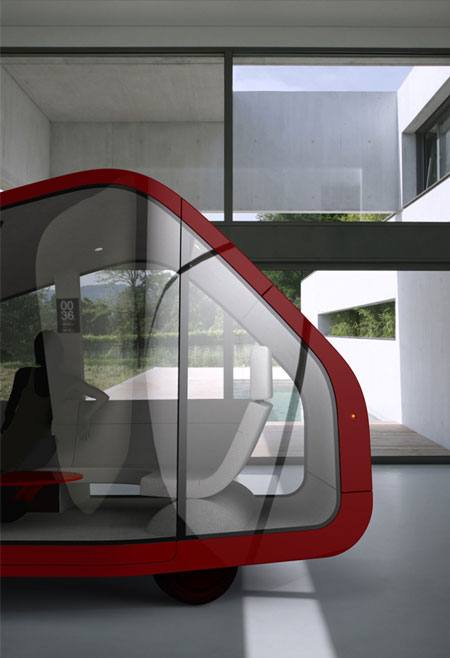
About Mike and Maaike
Mike and Maaike is an industrial design studio that takes an experimental approach to design, creating progressive solutions for high and low tech products, furniture, wearables, environments, and vehicles. Maaike Evers is Dutch; Mike Simonian, Californian. Their distinct backgrounds and unique approach create strong conceptual foundations and a clear point of view. Equally inspired by the tradition of craft and the potential of industry, Mike and Maaike have designed and developed complex high-tech products as well as artful and personal objects.
The studio, which has received recognition and awards from design publications and museums around the world, is based in San Francisco. Mike and Maaike partner with people, organizations and companies who value an informed, experimental approach to design and the unexpected results it brings. They recently collaborated with Google to develop Android-based smart phones